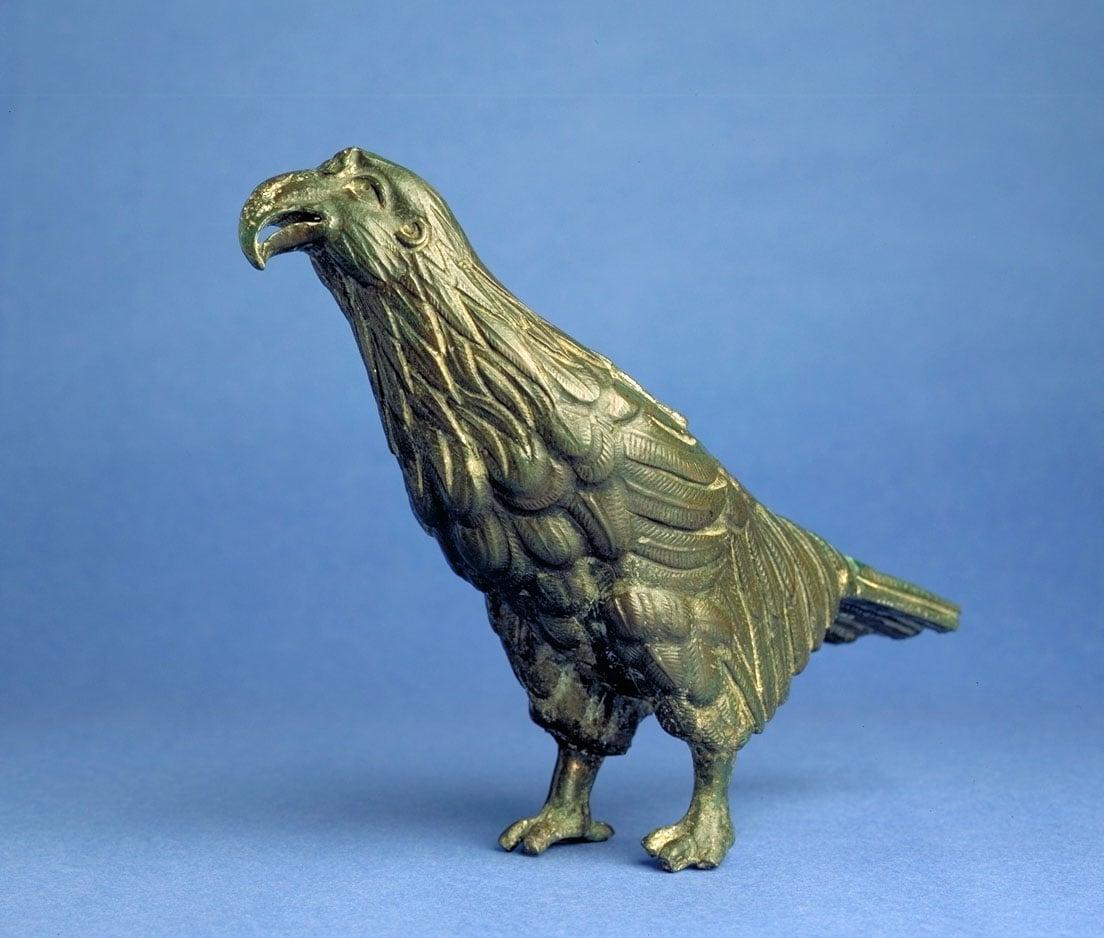
A bronze eagle poised for flight. Although the wings are missing, they should be raised and spread. Curve of the underside of feet suggests that the claws once clasped the surface of a globe. The bird was most likely fixed to an orb in the hand of a statue. Described as the 'most superbly naturalistic rendering of any bird or beast as yet yielded by Roman Britain', it was originally excavated in 1866 by Reverend JG Joyce at the Roman town of Calleva Atrebatum near Silchester, Reading, an important centre since the late Iron Age and regional capital after the Roman invasion. The extensive collection of artefacts from the site had been on loan to the Reading Museum from the Dukes of Wellington since 1891 and was purchased from the executors of the 7th Duke.
More information
Title of artwork, date
Figure of an Eagle, 2nd century
Date supported
1980
Medium and material
Copper alloy
Dimensions
15 cm
Grant
2000
Total cost
20000

Get a National Art Pass and explore Reading Museum
You'll see more art and your membership will help museums across the UK
National Art Pass offers available at Reading Museum
10% off in shop
Expires: 1 Jan 2026
Art Funded by you FAQs
Contact us
If you have a question about a work of art in our archive, please contact the Programmes team. We’ll be happy to answer your enquiry.